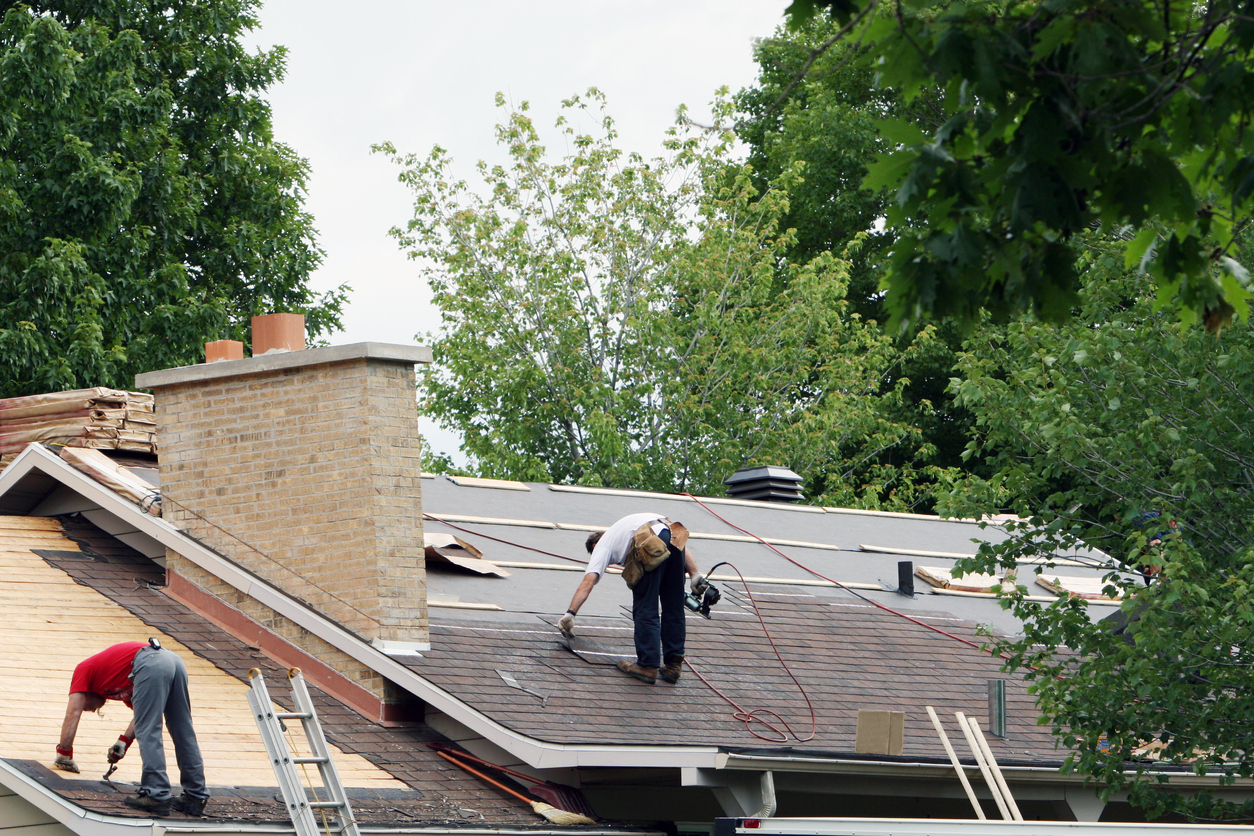Over the past few years, I have watched countless clients replace their roofs following the recent stretch of hurricanes in Louisiana. As I prepared to replace the roof on my own home, I began to look into the Fortified Roof program recently enacted and funded in Louisiana.
A little about my background – I grew up near Cleveland, Ohio, and have worked with my father’s business, All City Roofing and Construction, all my life. I first climbed up onto a roof when I was two years old and have been involved in every aspect of managing a construction business ever since, from advertising to tear-off to reinstallation. I have had the privilege to install countless roofs and complete hundreds of repairs with my father, Chuck Goble. He encouraged me to go to law school and use this knowledge to help make the world a better place. After meeting my wife, Erica, and moving to Louisiana, I began practicing in the world of first-party insurance, first on the defense, then moving over to representing policyholders. Thankfully, joining the team at Merlin Law Group has allowed me to put this experience to use in evaluating, litigating, and resolving property insurance disputes.
The Fortified Roof program contains several requirements for eligibility. If accepted, a property owner is eligible for a $10,000 grant if the roof is completed to Fortified standards. Among these requirements is selecting an approved evaluator to determine eligibility (at the applicant’s expense) and an approved contractor to complete the project. Politicians have promised insurance premium reductions, though those have yet failed to materialize.
When looking at the standards, I decided to write this post to share my thoughts and perspective as both an attorney and roofing contractor. While the Fortify program will certainly help increase the weather resistance of roofs in Louisiana, there are some aspects that any potential applicant should consider before moving forward with the Fortified program.
Fortified Standards:
STRONGER EDGES
Roof damage often begins when wind gets underneath the roof edge and begins ripping it away from the home. To help protect this vulnerable area, FORTIFIED requires specific materials and installation methods, including a wider drip edge and a fully adhered starter strip, that when used together create a stronger system.
A wider drip edge is good but sometimes difficult to find. Fully adhered starter strip does not cause any functional problems and does provide greater wind resistance at the eaves and rake edges. However, the starter strip can be difficult to work with, causing the first course to be crooked, which can negatively impact the roof’s aesthetics. Crooked courses can cause issues with wind resistance as well.
I will use a starter strip on the eaves and rake edges but will also consider using a starter shingle along the edge to keep everything straight. I will also try to use a wider drip edge if I can find it. If not, I will definitely use screws to attach the drip edge instead of just using nails. This provides more strength than simply using a wider drip edge.
SEALED ROOF DECK
If wind rips off your roof covering―such as shingles, metal panels or tiles―it exposes the wood beneath and allows water to pass through the gaps and enter your home. FORTIFIED requires roof decks to be sealed to prevent this type of water damage.
When speaking with a contractor, he explained that this aspect is satisfied in one of two ways. First, the gaps in the sheathing should be sealed with waterproof tape. Alternatively, and this was the method the contractor preferred, was covering the whole house in ice and water shield, which is a waterproof membrane that adheres to the sheathing and provides a watertight seal beneath the shingles. The idea is that if shingles blow off during a storm, there will be a membrane that prevents water intrusion. There are a few issues with this protocol, but my main concern is ventilation. By covering the entire roof in a vapor barrier, the very hot temperatures of attics can cause issues with the underside of the sheathing, causing premature wear and shortened useful life. Excess moisture will not be able to evaporate outward from the sheathing because of the ice and water shield, and excess moisture and humidity in an attic can cause a whole list of problems.
I do not plan to seal my entire roof deck because if a strong enough storm hits, the presence of ice and water shield will only make a marginal difference in preventing leaks.
BETTER ATTACHMENT
Instead of common smooth nails, FORTIFIED requires ring-shank nails, installed in an enhanced pattern, to help keep the roof deck attached to your home in high winds. In fact, using ring-shank nails nearly doubles the strength of your roof against the forces of winds.
This was a big turn-off for me and why I decided not to go with the Fortified program. I do not like ring-shank nails, or nail guns, for that matter. When learning how to install shingles, my dad made me hand nail more roofs than I could count. This taught me nail placement and how to keep the courses straight. Ring shank nails would not be as much of a problem if they just built homes like they used to. The roof of most modern houses is composed of sheathing, which is sometimes plywood but usually oriented strand board (OSB). Effectively, this is particle board made from wood chips pressed into the shape and size of a piece of standard plywood. It is more cost-effective at scale to use and, under normal conditions, performs as well as plywood in its sheathing functions.
The problem with OSB is twofold. First, since it is made of fragments, there are more places of potential failure in the wood grain of the OSB. Ring shank nails and the wire attached to gun nails, combined with overdriven nails, can cause OSB (especially thinner OSB) to split out from the bottom, weakening the overall roof surface. Also, the heads on gun nails are of decreasing quality to the point I have seen them split off of the nail, rendering them useless. Also, when OSB gets wet, it turns into cardboard because that is essentially what OSB is. Whereas plywood or 1” deck boards could withstand a small moisture intrusion, water is incredibly destructive to OSB and normally requires replacing after even small amounts of moisture.
However, the requirement to re-nail the sheathing at 6” intervals is not a bad requirement.
Ultimately, I will be hand-nailing my roof with my dad using double hot-dipped galvanized nails, and I will also re-nail my sheathing by hand where needed. Nail guns are one of the worst things that happened to the quality of roofs nationwide. I will definitely lose the battle on that with the industry, but for my house, I am confident in its fortified capabilities with hand-nailing the roof.
IMPACT-RESISTANT SHINGLES
In hail-prone areas, homeowners are encouraged to opt for the Hail Supplement to their FORTIFIED designation. To achieve this added level of protection, shingles must score Good or Excellent on the IBHS Hail Impact Ratings. These outperform typical Class 4 shingles when tested against realistic hailstones and will better protect your home from hail up to 2” in diameter.
Call me cynical, but I do not believe in such things as hail-resistant shingles. Since hailstorms never deposit the same size or velocity of hailstones, shingles rated to resist impact from 2” hail are questionable. These shingles are also typically more expensive. Also, the hail resistance of shingles degrades over time, but once a shingle has been hit with hail 5 to 10 times, the shingle has done its job. Impact resistance is not permanent.
Those in the various state legislatures should take some time to talk to roofing contractors regarding these Fortify standards. Undoubtedly, the Fortify program has consulted with various industry experts, but some of their requirements may be creating unforeseen externalities and trading one problem for another.
I am looking forward to another job with my dad replacing my roof. We have not done a job together in quite some time, so I am excited to get this done. As a policyholder attorney, it is very important to understand the technical details that go into roofing and all building systems. I am very grateful to have learned these lessons and skills over the years.
Quote of the day:
It isn’t that the wind is blowing, it’s what the wind is blowing.
—Ron White




